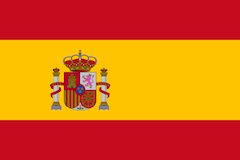Girard was preoccupied with fiestas and processions, profusion of adornment, and movement. Reflecting on the assemblages and installations he created with traditional arts, Girard mused that “it should all be part of a joyous spectacle, a dance.” The objects he and others collected are those very items we see in the photographs of Pierre Verger’s book Fiestas y Danzas en el Cusco y en Los Andes published in 1945. While Verger attempted to capture a living practice in which these objects play a role, Girard tells us he was creating “an abstract symbol of Latin America, a special ‘stage world’ and not a historically or realistically accurate reproduction of any given place.”
Girard was not the only one to put these dance capes to corporate use. The cape of San Martín (above) spent decades gracing the walls of the Neutrogena Corporation headquarters under Lloyd Cotsen. Cotsen, an avid collector inspired by Girard, meant these pieces to transform the experience of being at work: “The word pleasure has had no place in the vocabulary of work, and pleasure is one of the keys to being human.” His curator, Mary Hunt Kahlenberg, validated Cotsen’s idea when she reminisced: “I would always smile as I passed a sequined portrait of a Bolivian hero while working at the Neutrogena offices….” For both Cotsen and Girard, the absence of historical context was the key to allowing the artworks to be properly experienced. Girard found labels to be a distraction, preferring instead a visual presentation “that will disturb and enchant the eye, rather than cram the viewer full of facts,” while Cotsen believed that removing historical context would encourage creative thinking.
The term “folk art” or arte popular has largely functioned to advance the notion of anonymity and to partition works as community craft rather than understanding them as visual arts with named makers. With the elite of Lima looking to European fine arts as emblematic of sophistication, pieces produced in Native and Mestizo communities were dismissed as acts of manual labor rather than artistry. Works such as these dance capes became items of interest in the 1940s largely through the efforts of Indigenist artists and intellectuals such as Alicia Bustamante, José Sabogal, and José María Arguedas who undertook projects to catalogue, rescue, and promote regional traditional arts as Indigenous aesthetic heritage. This dovetailed with growing interest in Latin American regional handwork traditions in the United States fueled by international political maneuvering. With the aim of keeping Nazi and Axis influence at bay, Nelson Rockefeller’s Inter-American Development Commission looked to raise the standard of living in rural areas by creating markets for the work of regional artisans. While many of these projects trained artists to re-create home fashions familiar to the United States consumer, by the 1950s collectors like Alexander Girard worked to develop consumer tastes for the folk traditions themselves. Rather than highlighting the work as that of particular artists, when these capes became part of collections, the focus shifted to the identity of the collector, the viewer, the consumer.
Strong push-back has continued against recognizing arte popular as equal to fine arts. The controversial awarding of the National Culture Prize for Art to Joaquín López Antay in 1975 for his retablos sparked a public debate and threw class and ethnic/racial divisions that are inherent in this distinction into sharp focus. This may be starting to change. In the last decade or so the Ministry of Culture is making stronger efforts to promote individual traditional artists; the work of particular families is becoming the subject of masters and doctoral theses; and pieces are entering more and more museum collections. This style of high-relief hand embroidery continues to be produced, and the capes continue to be danced in honor of the Virgin of Cocharcas. With recognition of mastery and authorship, may they continue to be danced for generations more.








